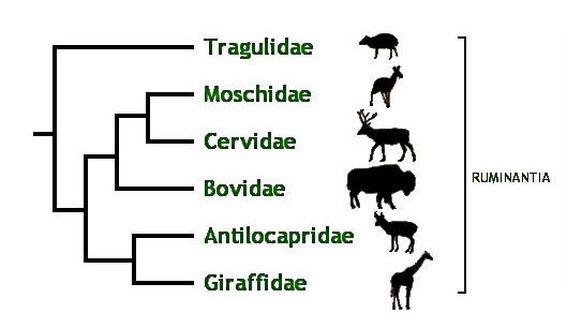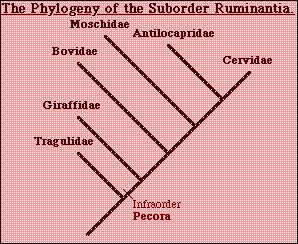Scientific name Ruminantia | ||
Clade RuminantiamorphaSpaulding et al., 2009 Suborder RuminantiaScopoli, 1777 Height Water buffalo: 1.3 – 1.3 m, Reindeer: 85 – 150 cm Speed Reindeer: 60 – 80 km/h, Chamois: 50 km/h Gestation period Cattle: 283 days, Sheep: 152 days Lower classifications | ||
Ruminantia is a taxon within the order Artiodactyla that includes many of the well-known large grazing or browsing mammals: among them cattle, goats, sheep, deer, and antelope. All members of the Ruminantia employ foregut fermentation and are ruminants: they digest food in two steps, chewing and swallowing in the normal way to begin with, and then regurgitating the semidigested cud to rechew it and thus extract the maximum possible food value.

Evolution

Ruminantiamorpha is a total clade of artiodactyls defined, according to Spaulding et al., as "Ruminantia plus all extinct taxa more closely related to extant members of Ruminantia than to any other living species." Spaulding grouped some genera of the family Anthracotheriidae within Ruminantiamorpha (but not in Ruminantia), but placed others within Ruminantiamorpha's sister clade, Cetancodontamorpha.
The Tragulidae are the basal family in Ruminantia.
The ancestral Ruminantia karyotype is 2n = 48, similar to that of cetartiodactyls.


Not all ruminants belong to the Ruminantia. Tylopoda and Hippopotamidae are classified as pseudoruminants. A number of other large grazing mammals, e.g. horses and kangaroos, employ hindgut fermentation as an adaptation for surviving on large quantities of low-grade food.

